Over the past two years our team at Evermed had a unique opportunity to deliver 18 projects for pharma clients, focused on providing short-form on-demand content through a Netflix-like user interface, for HCPs from 120 countries across 6 specialties.
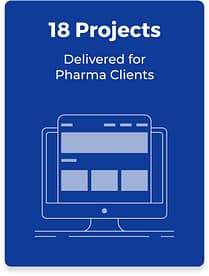
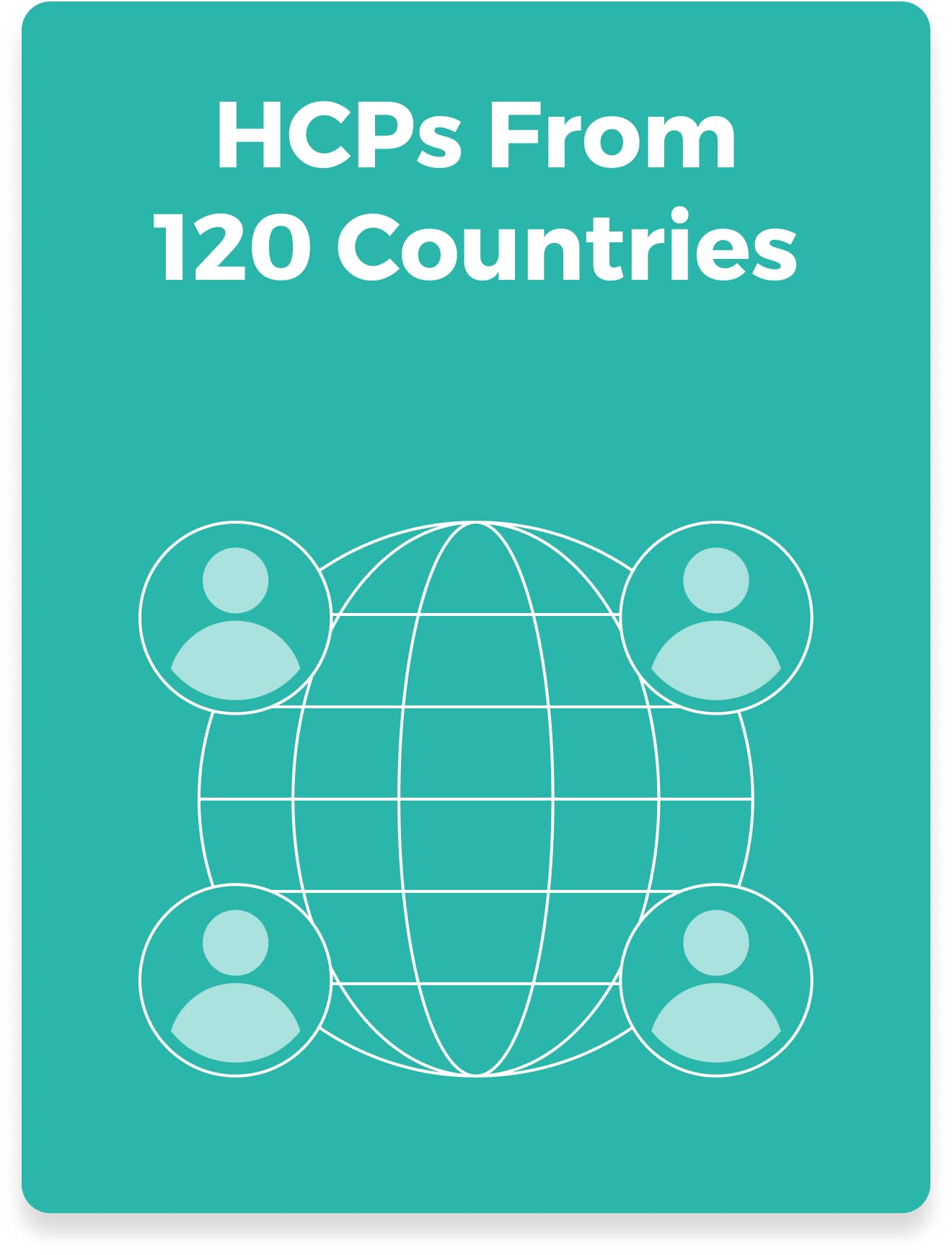
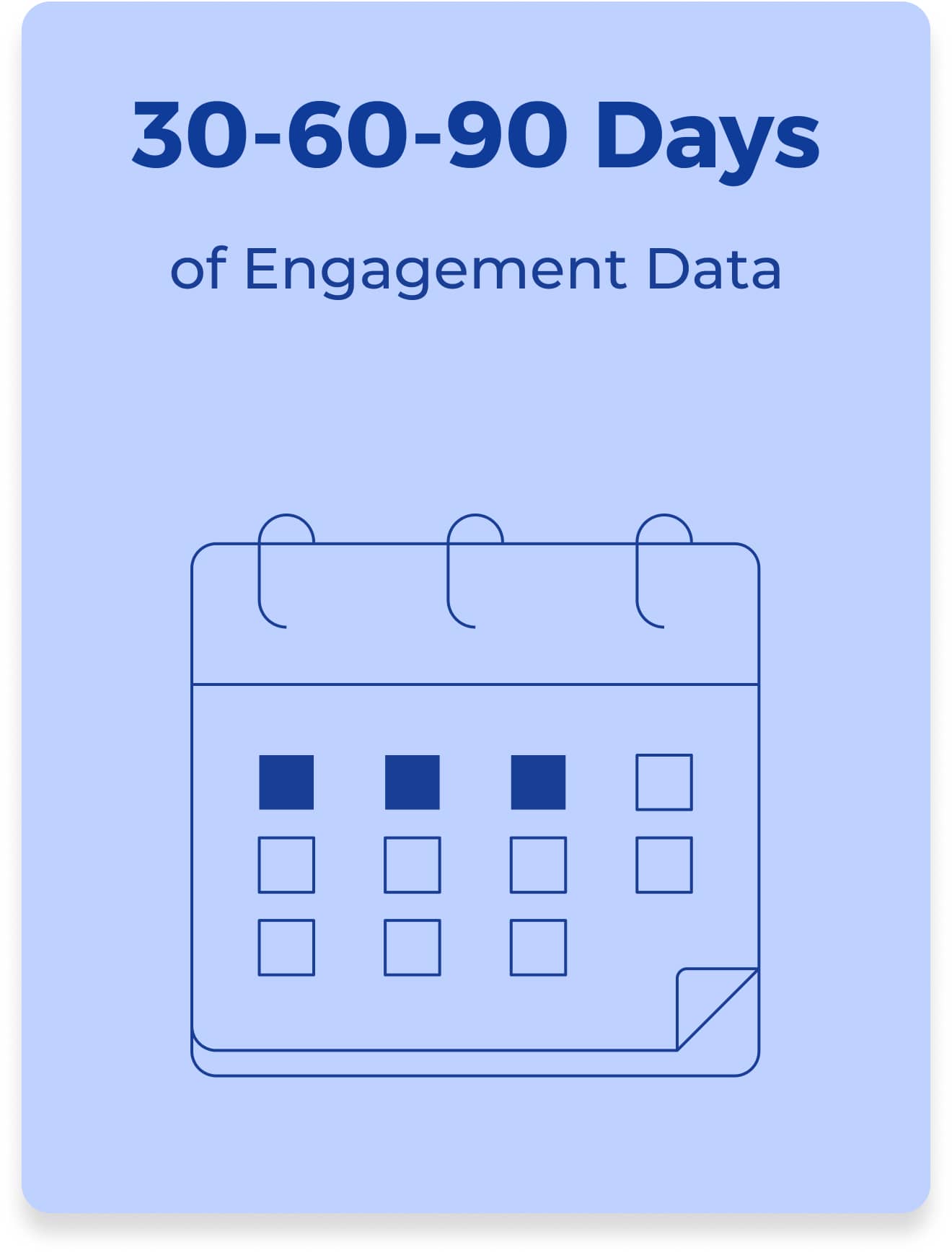
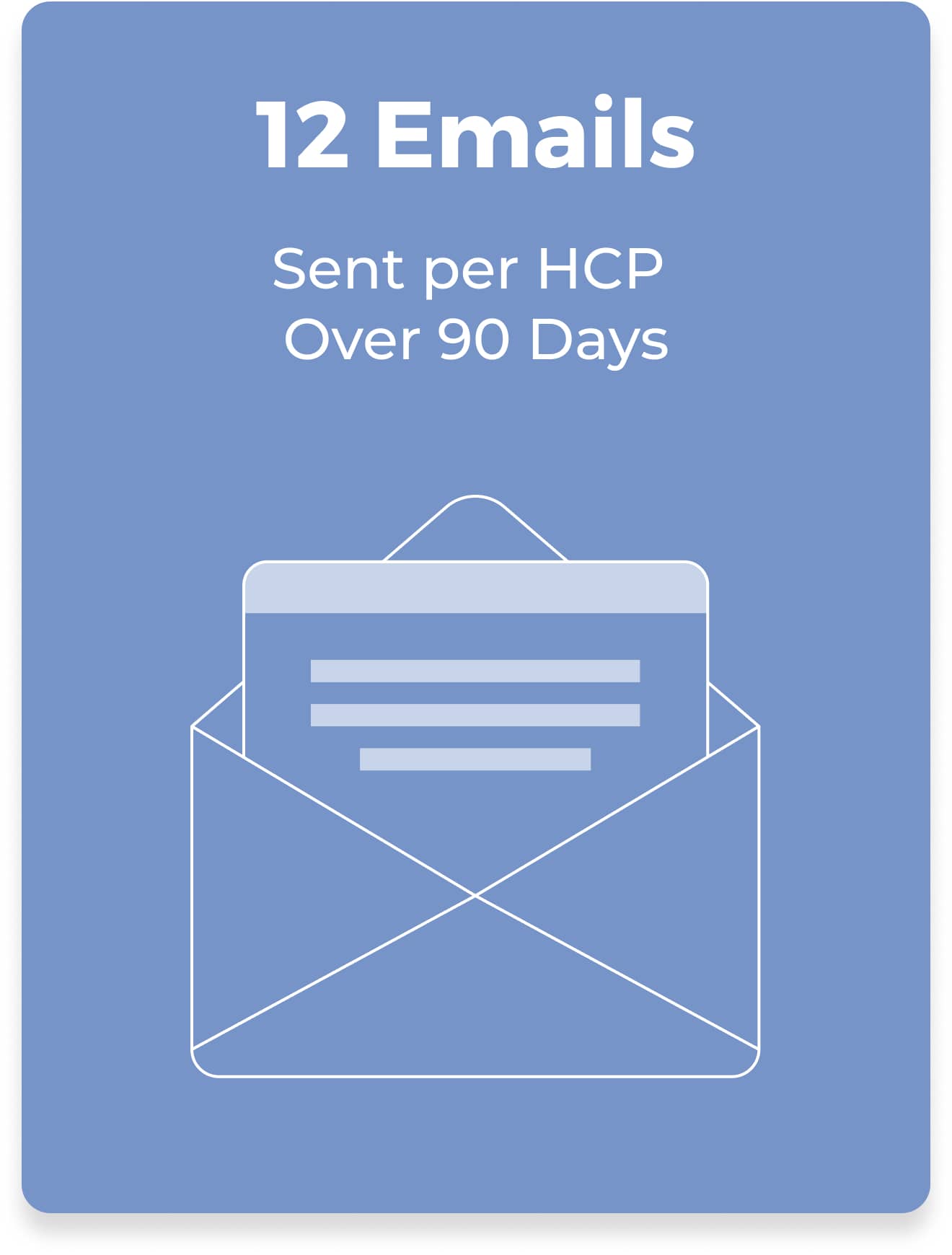
Here is how HCP's journey looked like, from the first click => first engagement with on-demand content => repeated engagement:
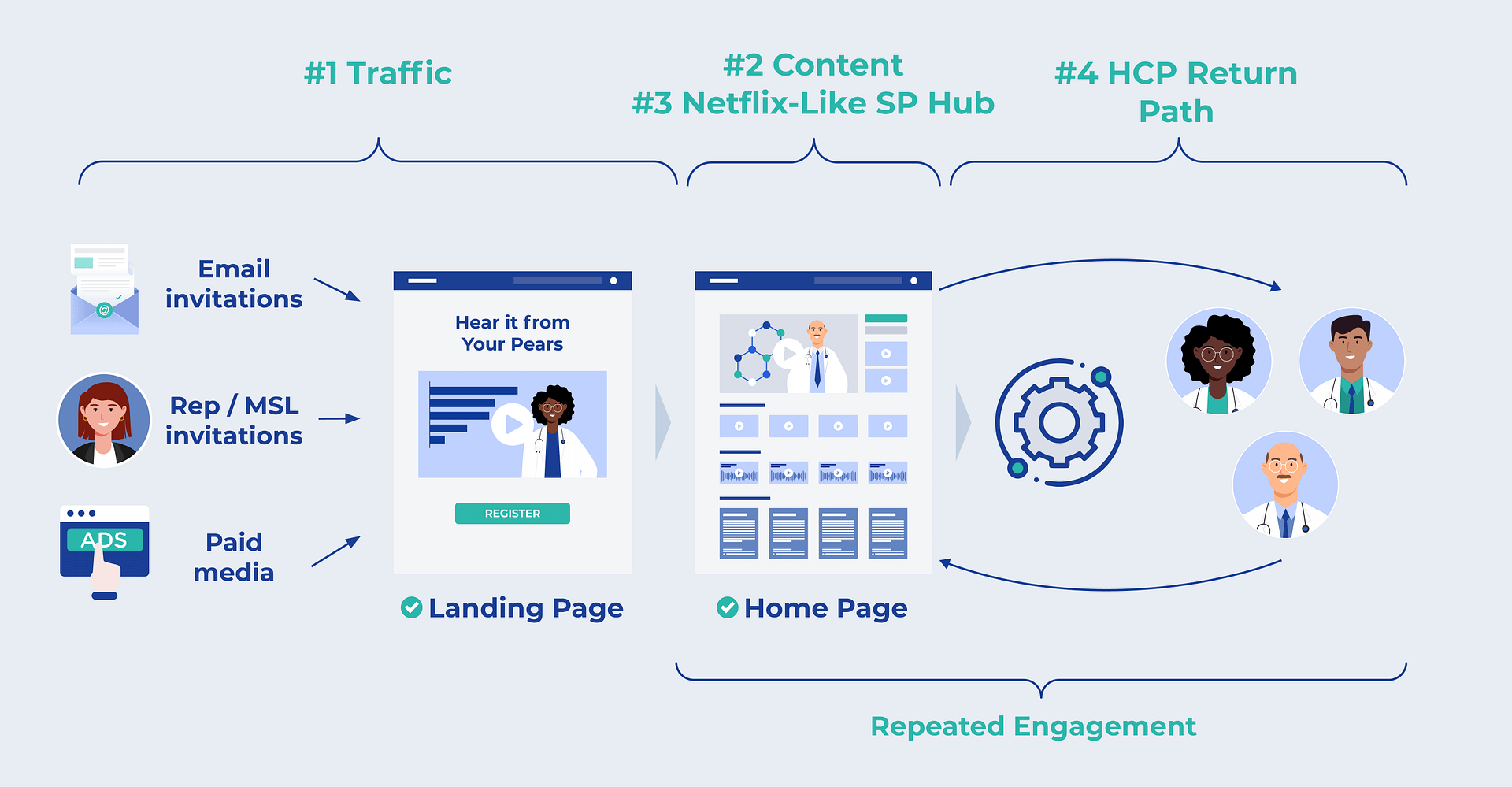
This setup has put us in a unique situation to see two years worth of HCPs’ behavior data and understand what the “new normal '' is when it comes to HCP engagement with on-demand video content.
If you want to learn how to have your own Netflix-like content hub for HCPs, click here.
Finding #1: HCPs spend a LOT OF TIME engaging with on-demand content
With webinars, HCPs would consume one long piece of content at once.
But with on-demand content, HCPs consume content over time and spend even more time!
Average engagement time per HCP within the first 30 days was 22 minutes, within 60 days it was 46, within 90 days it was 75 minutes!
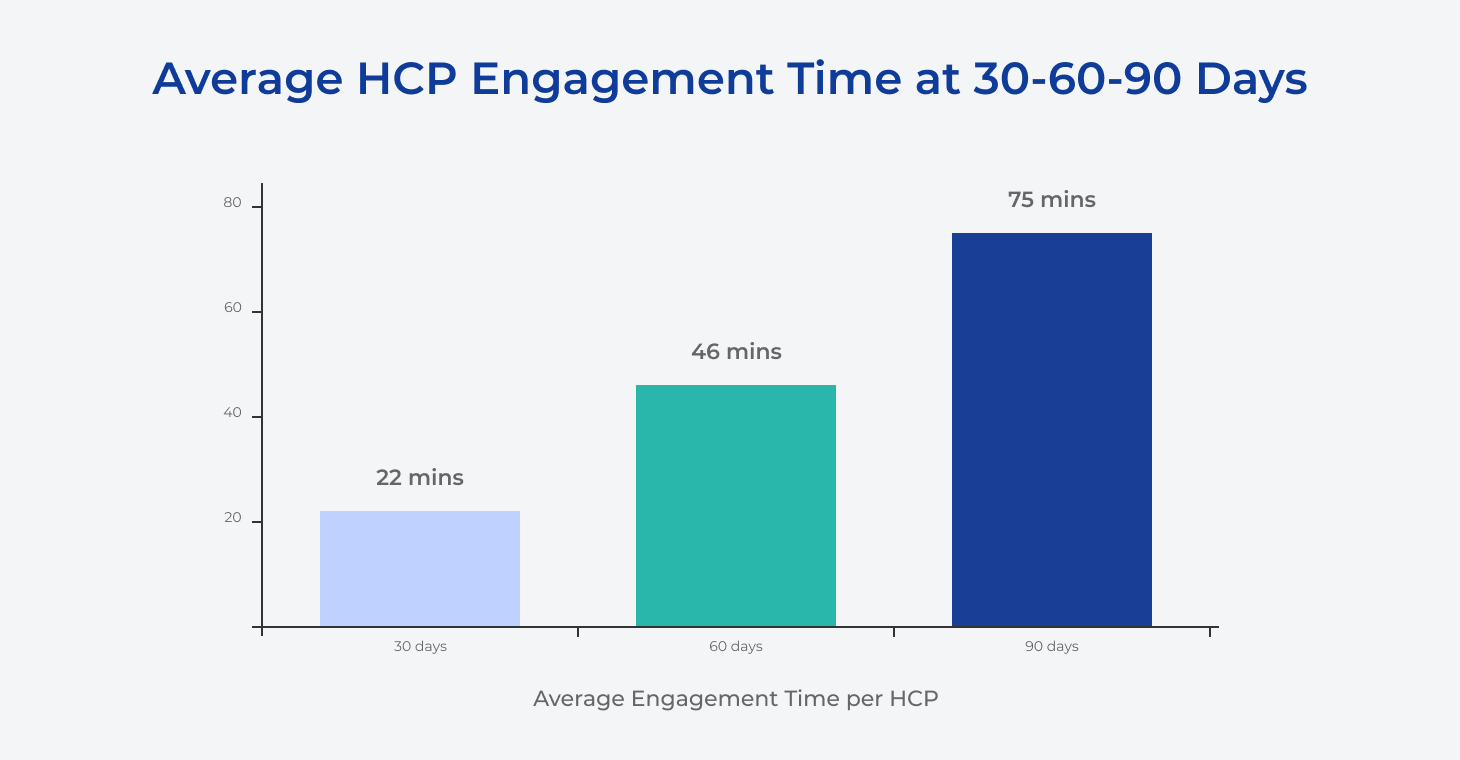
Finding #2: HCPs consume on-demand content in a piecemeal manner
HCP log-in 20 times over the course of 90 days (!), and spend 6 minutes watching content every time they log-in.
That means that doctors are watching on-demand content in bursts of 6 minutes, whenever they have some time or get nudged by an email.
This also means that it's imperative to find a way to nudge HCPs to come back to the content hub and re-engage with the content. What we call a “return path”.
Which brings us to the next finding..
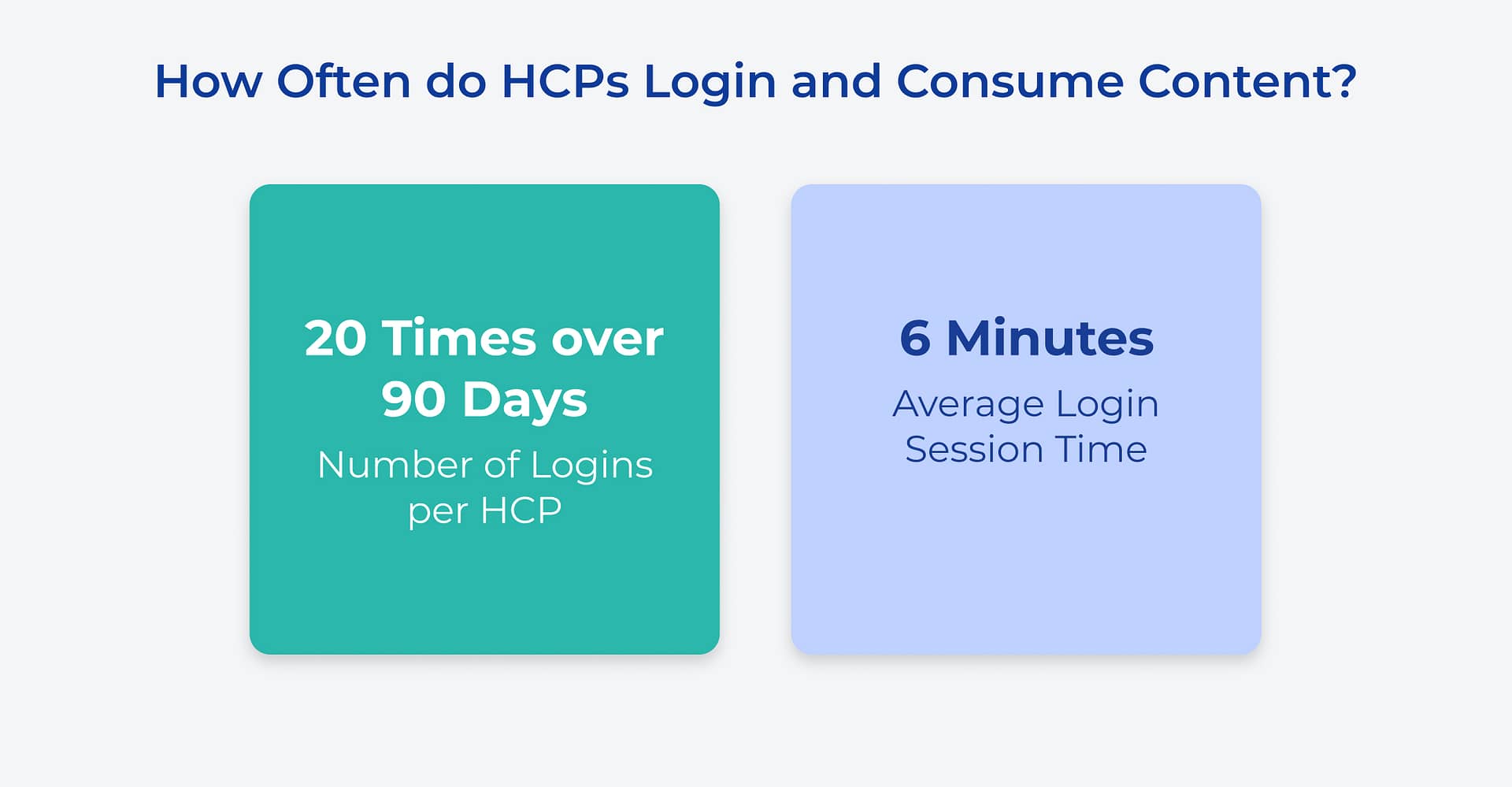
If you want to learn how to have your own Netflix-like content hub for HCPs, click here.
Finding #3: Email “Return” Campaigns drive 370% increase in engagement. They are the key to repeated engagement..
You know those emails that Netflix sends to us, with personalized content recommendations?
They are powerful. They drive users back to Netflix. They drive repeated engagement and create a habit.
We tested the similar approach by sending weekly emails (more on that below) that bring HCPs back to the content hub, creating a return path, and repeated engagement.
And what we saw was astonishing: Average engagement time over the 90 days period when we did NOT send email campaigns after HCPs would register, was 30 minutes.
In contrast, when we DID send the email campaigns, average engagement time was 111 minutes.
That's a 370% difference!
Conclusion: Launching an on-demand content hub without an email “return” campaign is a sure way to fail, while launching it with an email “return” campaign increases chances of success by 370%.
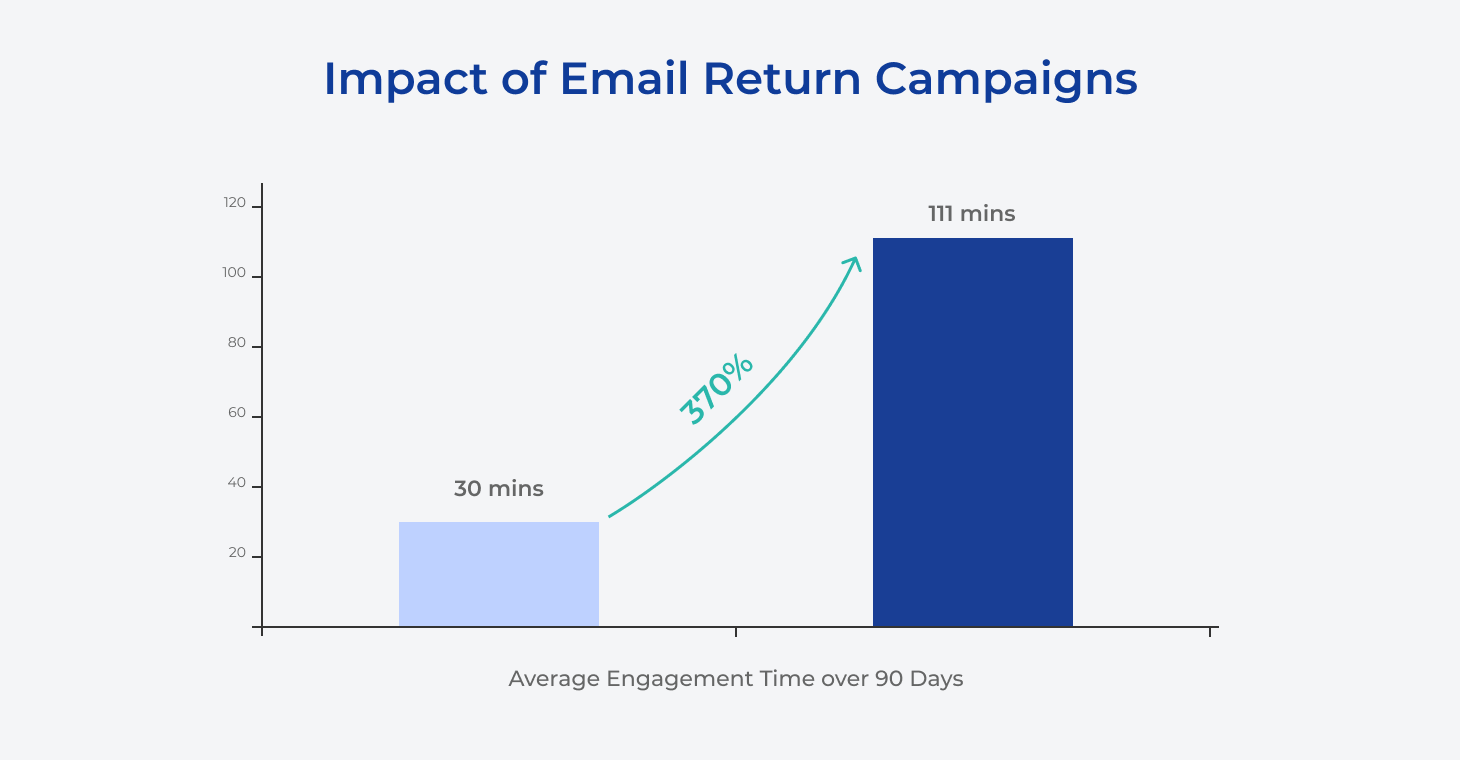
Finding #4: Email “Return” Campaigns have higher open-rates than both rep-triggered emails and pharma email broadcasts
Here is the proof: Average email open rate over a 90 day period was 37.2%.
That means that open rates for email ‘return” campaigns are 24% higher than rep-triggered emails* and 57% higher than pharma broadcasts”.
That means that the broadcast email sent from content hubs (scalable, one-to-many email) is performing 24% better than rep-triggered email (one-to-one email, non scalable). That’s huge!
The reason for high open rates is a combination of three factors:
- 1) Trusted presenter
- 2) Relevant topic
- 3) On-demand delivery in an intuitive, Netflix-like user experience.
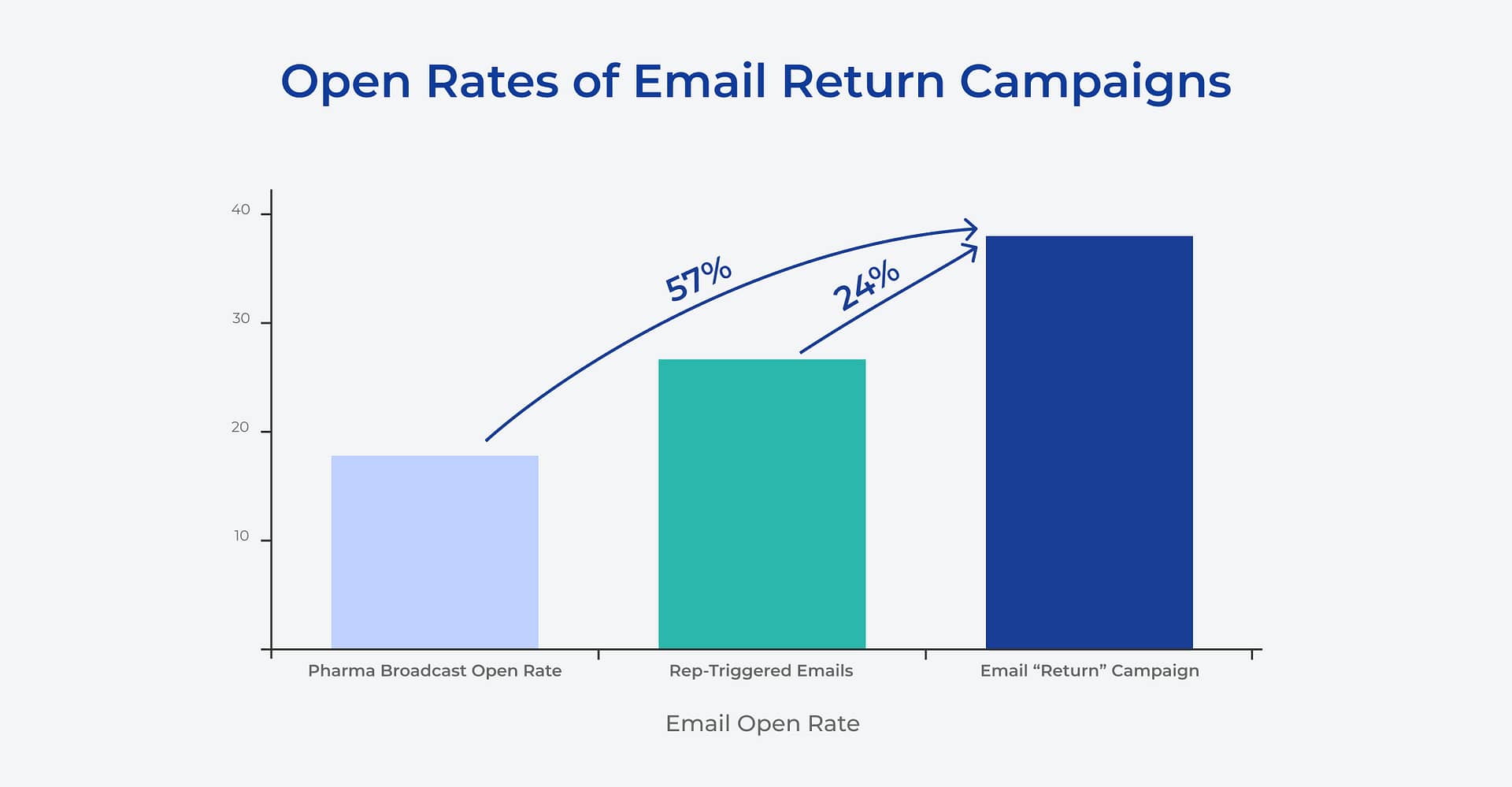
If you want to learn how to have your own Netflix-like content hub for HCPs, click here.
Finding #5: Each “return” email drives linear increase in average engagement time per HCP, without any signs of slowdown over the first 90 days
Our data: each email drove an average of additional 6.6 minutes of engagement time per HCP.
Within the first 30 days each email drove an extra 10.6 minutes, for days 31-60 it drove an extra 4.5 minutes of engagement time, and for days 61-90 it drove 4.7 minutes of extra average engagement time.
Our conclusion here is that “return” campaigns are the key to repeated engagement and that when implemented correctly (see below), HCPs keep opening emails, keep clicking on the links, and keep coming back to the content hub.
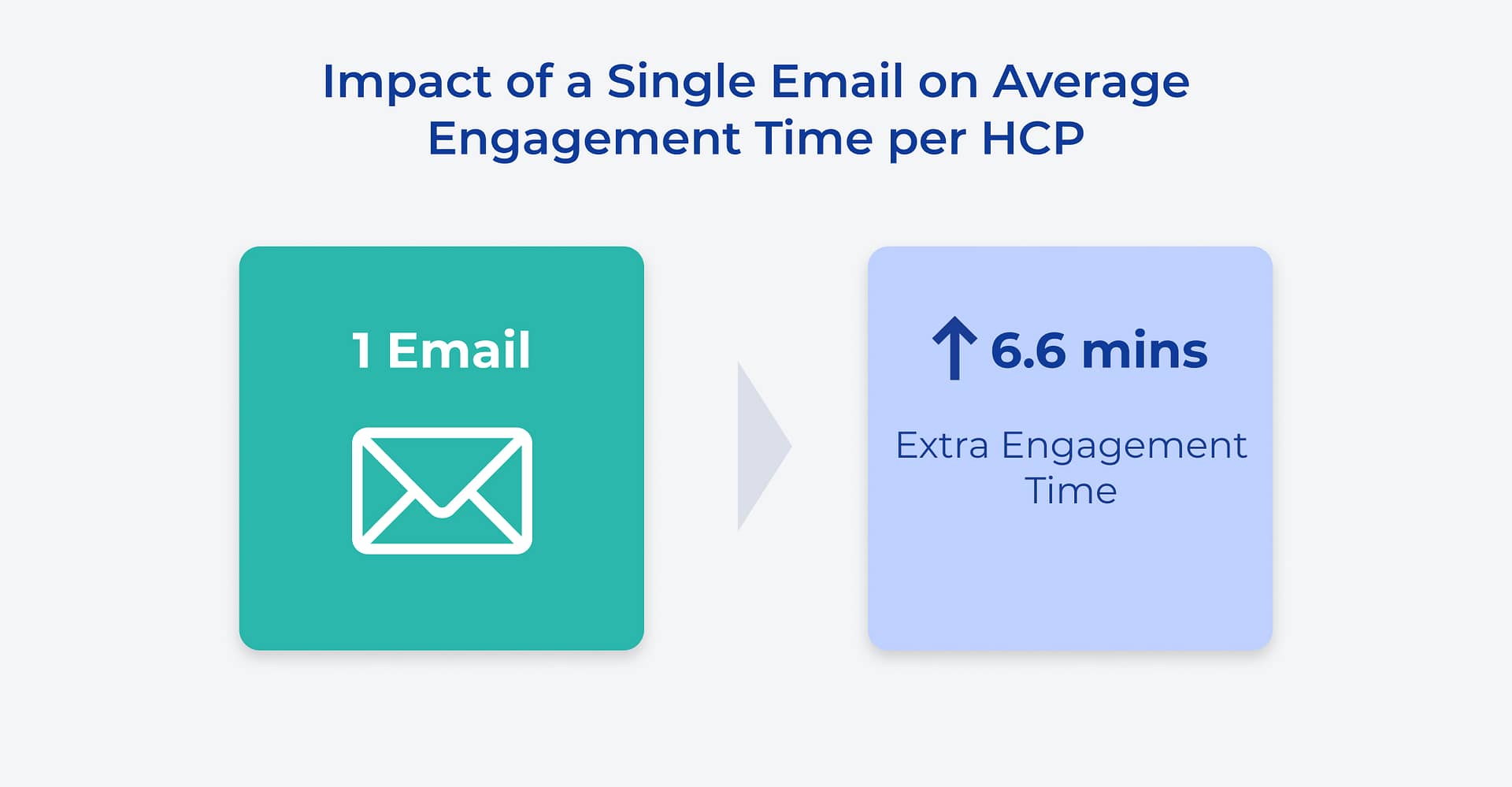
Finding #6: Emails can’t be boring and dry. Instead use the “VIPE'' approach.
We modeled our email campaigns approach after Netflix and created a “VIPE” approach. What is VIPE?
It’s an acronym for V-isual, I-nteresting, P-ersonalized (like Netflix personalized content recommendations) and E-ducational. Let’s break that down:
Visual emails work better than non-visual. For example, when we added an image with a play button in the middle, we would get a 38% higher click rate.
Interesting: We experimented with various types of emails and learned that the VIPE approach works the best. In addition, using a variety of email formats (Newsletter, Lecture/Session Key Takeaways) while having unique, curiosity-driven subject lines and a clear call-to-action has a much greater impact when aiming towards high conversion rates.
Personalized: Generic emails don’t work that well anymore, HCPs are getting used to content finding them as opposed them searching for the content (“if you watched this you may want to watch that” or “based on your preferences, you may be interested in…”)
Educational: HCPs want a mix of disease and product related content, that’s educational in nature. Seeing a talking head of a trusted KOL that talks about a relevant topic signals educational nature and drives higher click-rate.
If you want to learn how to have your own Netflix-like content hub for HCPs, click here.
Conclusion
HCPs’ preferences have permanently shifted towards on-demand, short-form video content.
This change creates an opportunity for content-focused pharma executives.
And an opportunity for you to launch your own, Netflix-like content hub and engage HCPs within 30-90 days using trusted, peer-to-peer, on-demand, educational content.
By taking an enabler position, you can leverage both the trust that exists between HCPs in peer-to-peer settings, as well as technological advances that make it easier to create modern, Netflix-like user interfaces.
Next Steps For You
If you want to learn how to have your own Netflix-like content hub for HCPs, click the button below to find out how
References from this article:


